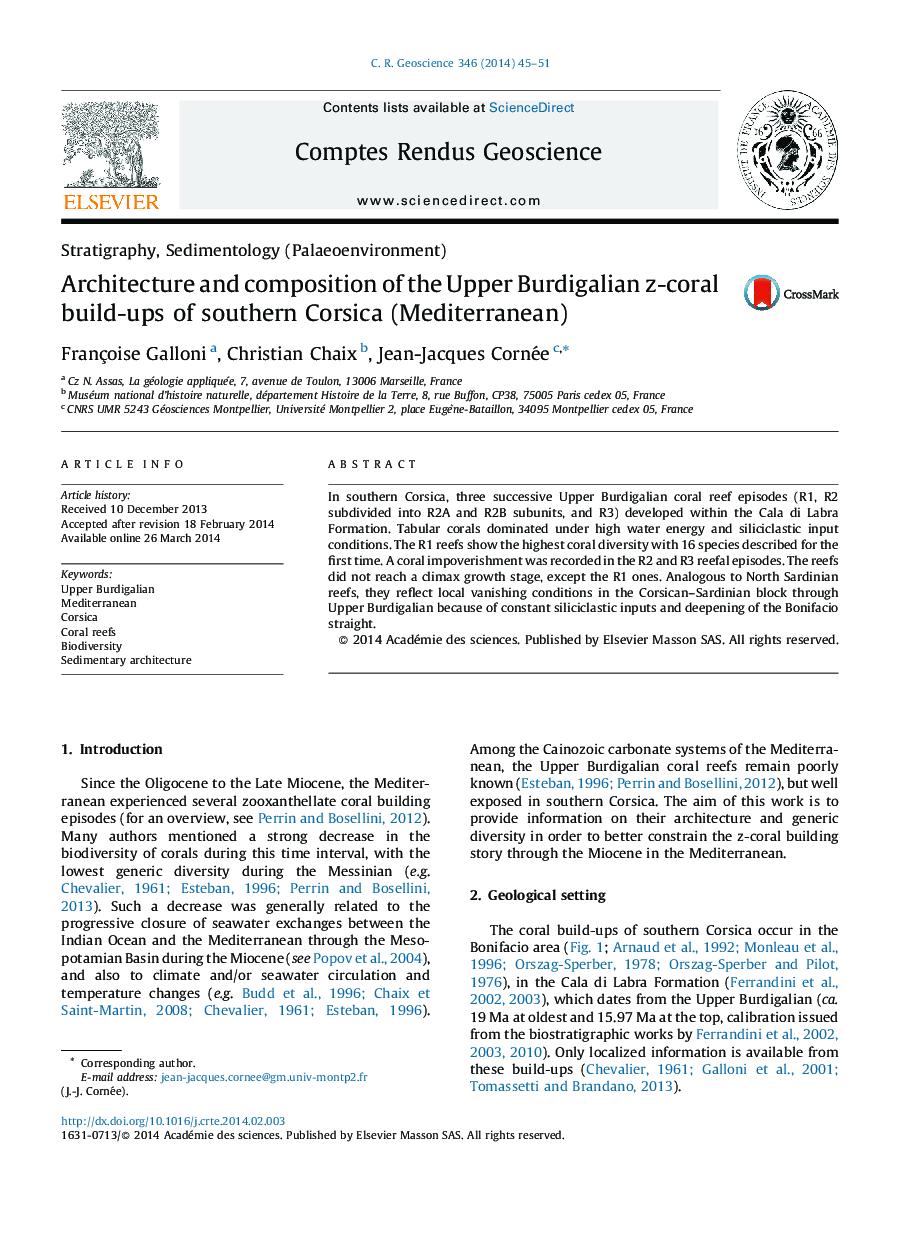| Article ID | Journal | Published Year | Pages | File Type |
|---|---|---|---|---|
| 4462255 | Comptes Rendus Geoscience | 2014 | 7 Pages |
Abstract
In southern Corsica, three successive Upper Burdigalian coral reef episodes (R1, R2 subdivided into R2A and R2B subunits, and R3) developed within the Cala di Labra Formation. Tabular corals dominated under high water energy and siliciclastic input conditions. The R1 reefs show the highest coral diversity with 16 species described for the first time. A coral impoverishment was recorded in the R2 and R3 reefal episodes. The reefs did not reach a climax growth stage, except the R1 ones. Analogous to North Sardinian reefs, they reflect local vanishing conditions in the Corsican–Sardinian block through Upper Burdigalian because of constant siliciclastic inputs and deepening of the Bonifacio straight.
Related Topics
Physical Sciences and Engineering
Earth and Planetary Sciences
Earth and Planetary Sciences (General)
Authors
Françoise Galloni, Christian Chaix, Jean-Jacques Cornée,
